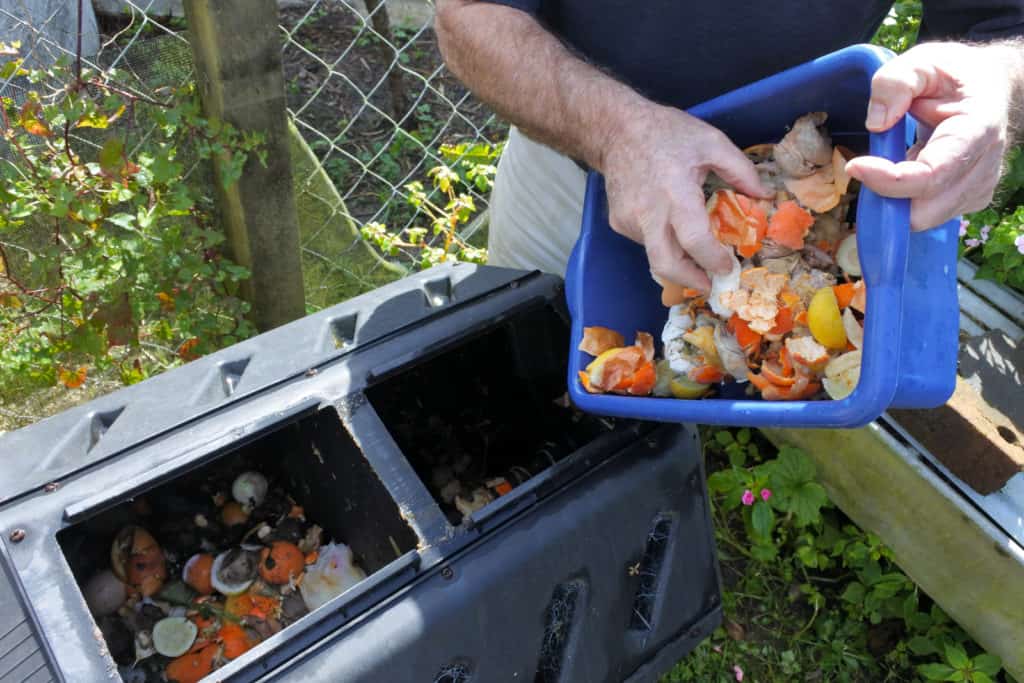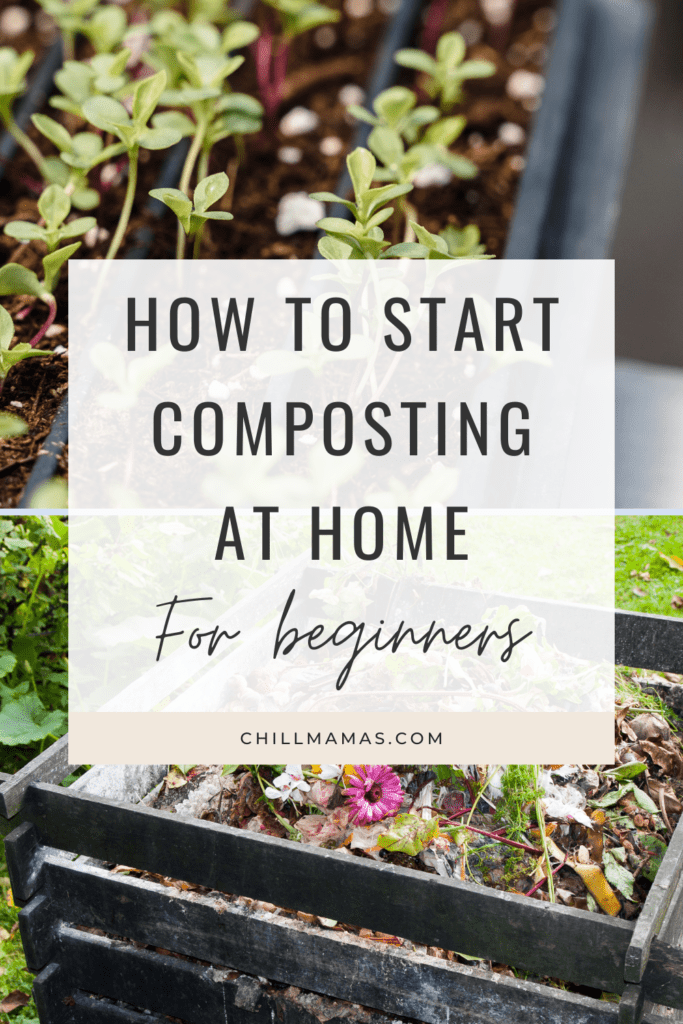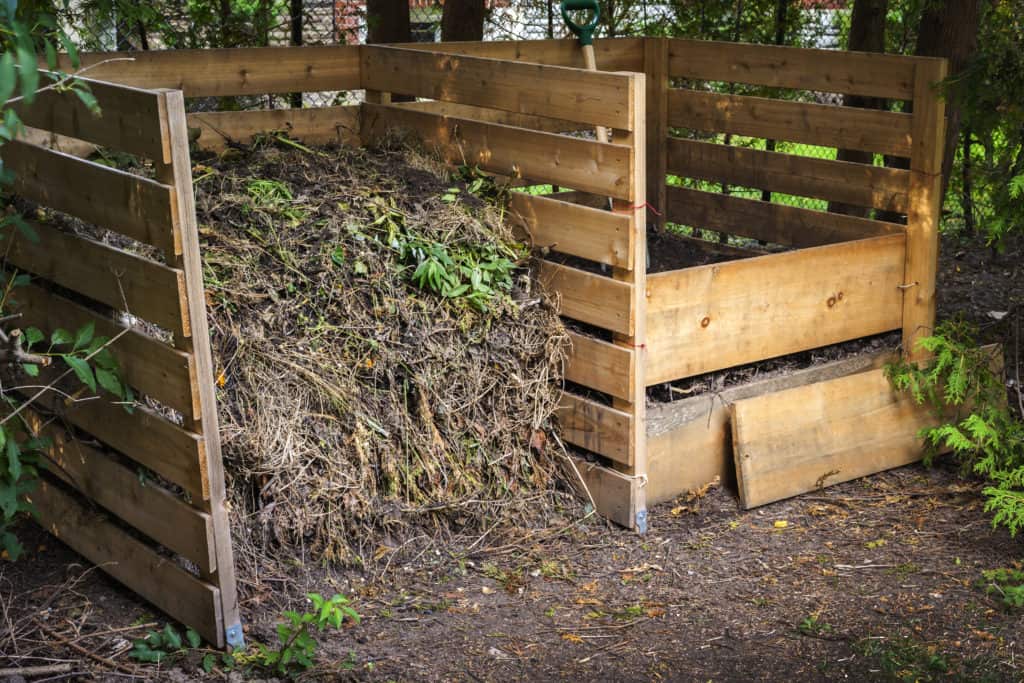
If you’re looking to start composting, you’ve come to the right place! In this blog post, we will teach you everything you need to know about how to start composting at home for beginners.
The most common method is through a backyard compost bin, but there are also other options like vermicomposting (composting with worms), Bokashi bins (a type of anaerobic composter), and tumblers (a rotating compost bin). If you have a small space, don’t worry – there are ways to compost in small spaces, too!
We’ll go over different ways to compost, what goes in a compost bin and what doesn’t belong there, the benefits of composting, and how to make small-space composting work for you. So, let’s get started!
Affiliate Disclosure: Some of the links in this post are affiliate links. This means that if you click on the link and purchase an item, I will receive a commission at no extra cost to you. I only recommend stuff I love and would recommend to a friend.
How to start composting at home for people with backyards
The most popular way to compost is using a bin. You can buy bins, or make your own out of materials like wood, metal, or plastic. The size of the bin depends on how much compost you plan to make.
A good way to start composting is by adding a small amount of green waste and brown waste to your bin each week. Green waste includes food scraps, like fruits and vegetables, coffee grounds, tea leaves, and eggshells. Brown waste includes things like dried leaves, straw, wood chips, and newspaper.
As your compost pile grows, you’ll need to turn it every few weeks to aerate it and help the decomposition process. After a few months, you should have rich, dark compost that’s ready to use in your garden.
Small-space composting options for people with apartments, balconies, and tiny yards
Living in a small space doesn’t mean you can’t compost your food scraps! There are a number of small-space composting options that will work well in apartments and yards with limited space.
One option is to use a worm bin. Worm bins can be kept on the kitchen counter or under the sink, and they don’t take up much space. Another small-space composting option is to use a bokashi bin. Bokashi bins are airtight, so they don’t produce many odors. They’re popular with people with apartments who want to start composting without a lot of space.
If you have a yard, you can also compost your food scraps in an outdoor compost bin. There are many different types of compost bins that can be purchased or made, so you can find one that will work well in your space.
Here’s a video from a very helpful sustainability YouTuber on how to compost in apartments and small spaces! Highly recommend checking this out or adding it to your “watch later” playlist if this applies to you.
What to put in your compost bin
 Pin
PinNot all food scraps are compostable. In order for food scraps to break down properly in a compost bin, they need to have the right ratio of carbon and nitrogen.
When it comes to what goes in your compost bin, most plant and paper-based materials are good to go. This includes things like fruit and vegetable kitchen scraps, eggshells, coffee grounds, tea bags, and paper napkins.
You can also add untreated cardboard (shredding it helps!) and 100% paper packaging materials. Straw, wood chips (untreated wood only,) newspaper, and leaves are all great composting materials.
Many eco-friendly products being made right now have packaging that is fine to compost in a home compost bin. Examples of these products are things like coffee cups and sleeves, cotton swabs, eco-friendly soap packaging, coffee filters, and more.
Make sure to check the product page or website to confirm that your sustainable products are home compostable and don’t require an industrial composting facility to break down.
You can gather food scraps for composting inside your home using a small bin and then take the bin out the the compost pile when it gets full. Here are a few of these kinds of bins – they’re handy to have on your kitchen counter or under your sink. It’s a lot more realistic to gather scraps and take them out once or twice a week than to go out to your bin every time you cook and have scraps leftover.
What shouldn’t go in your compost bin
Things that you don’t want to put in your compost include meat, dairy products, oils, pet waste, and black walnut shells (these can kill plants). No synthetic materials, either.
Where to buy a beginner-friendly compost bin
 Pin
PinYou don’t have to buy a bin for composting, but a lot of people like to get a bin to keep everything more contained and reduce the likelihood of rodents getting to their compost piles.
Some compost bins will speed up the process of composting significantly. You can get composting done by just piling your compost on the ground, but it will generally take several months to over a year to turn into compost that you can use in your yard or garden.
There are a lot of great, beginner-friendly compost bins and worm bins available on Amazon. Buying a compost bin generally costs anywhere between $40-$120 depending on which model you get.
- The compost tumbler is probably one of the most popular options because it’s relatively affordable and easy to use. Putting it together usually takes more time than you would expect, but they are easy to deal with once you’ve got it built. The spinning action of the tumbler speeds up the decomposition process and a lot of times, you can have compost ready within 6-8 weeks in hotter weather.
- A pop-up composting bin is one of the cheapest ready-made options on the market. These tend to be large and work well for yards that aren’t super tiny, since you will be able to smell the compost pile at a close distance. Check out the GEOBIN or the SmartPots Compost Sak.
- You can get a more standard, box-shaped compost bin. This one doesn’t spin around, so it might take a bit longer to break down your compost. It’s easier to put together, though, and it has a bigger opening for you to throw in larger yard waste. You’ll wait for the composter to do its thing and then open the door at the bottom of the bin to shovel out your new compost. I have one of these compost bins and I really like it.
- You could get a worm bin setup for vermicomposting. These can be indoor or outdoor setups. You’ll need to get some worms into the bin to start utilizing them. If you can get them yourself locally, that’s a great option. You can also order a pound of them online, which is likely a good place to start unless you have a really huge bin.
Building a cheap or free compost bin
You don’t need to buy anything to start composting if you don’t want to. YouTube is full of people composting on bare soil successfully. Just dump everything in a pile in a place where it’s less likely to get disturbed and try to aerate it every week or two. To do that, use a shovel, rake, or pitchfork to mix it up.
If you can, try to contain the composting area with some fencing or untreated wood pallets. Sometimes you can find these locally, being given away for free. Check Craigslist and your local free groups on Facebook and you’ll probably be able to find some materials available that you can use for a free compost bin or composting area.
Why compost?
There are many reasons why composting is a good idea: it helps reduce waste, creates nutrient-rich soil for gardening, and can be done in small spaces. Composting is also a great way to reduce your carbon footprint, as it keeps organic material out of landfills.
The reason that food scraps and organic material in landfills is an issue is that it releases methane (a greenhouse gas) into the atmosphere. Food scraps can’t decompose nearly as easily in landfills because of the lack of oxygen flow. Most food scraps are underneath piles of other garbage or tied up in plastic bags.
According to the EPA in 2019, landfills are the third-highest producer of methane gas in the U.S. Recycling food scraps and other organic materials, like leaves and sticks, back into the earth by composting helps keep that from happening.
If you don’t use compost yourself as a free garden soil booster, there are probably many local gardeners who will gladly come take your compost off your hands. You can also make and use compost tea to water your flowers and other plants in your garden.
Not only is composting good for the environment, but it can also help your plants grow. If you’re interested in composting, I hope this blog post has given you the information you need to get started. Happy composting!
Want to read more about sustainability at home? Check out these posts:
- 9 Straightforward Ways to Make your Home More Sustainable
- 7 Popular Low-Maintenance Indoor Plants for Your Home Office
Pin this post for later:
 Pin
Pin



